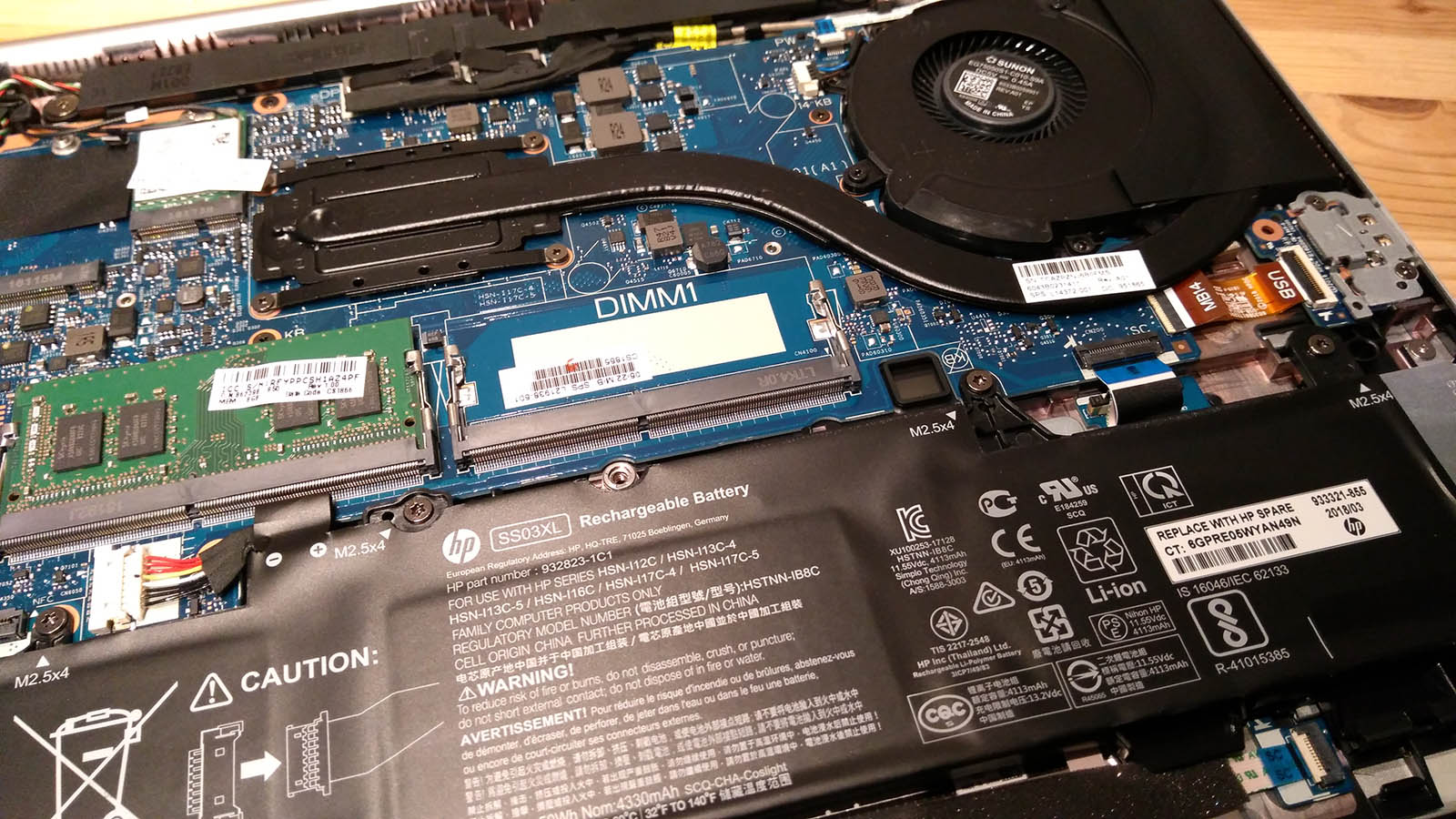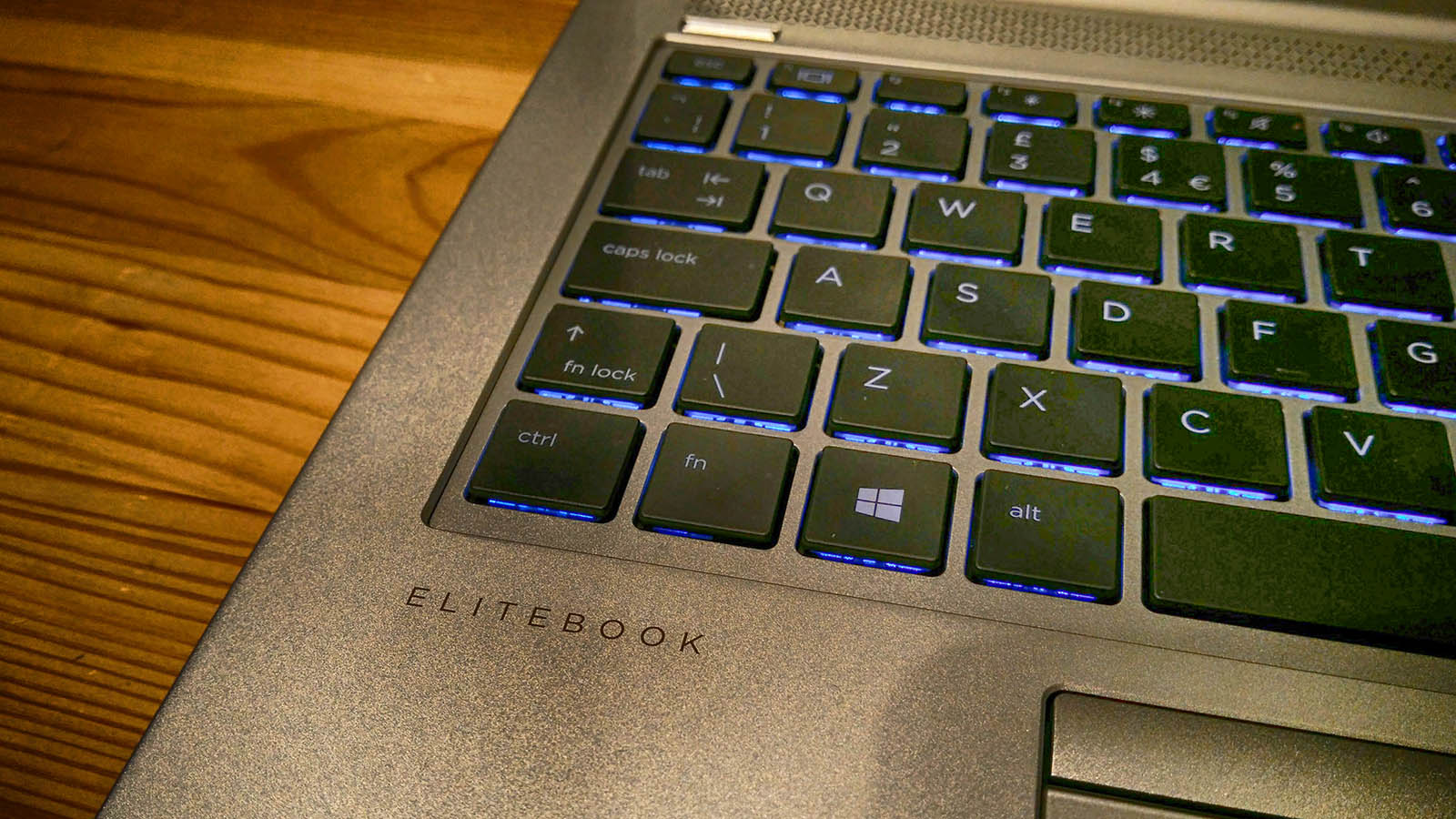Why you can trust TechRadar
Usage and performance
We’ve not seen many Ryzen machines thus far, and this system made a very positive impression. AMD has built a powerful platform that can push Office applications and more graphically intensive tools along with equal aplomb.
Here’s how the HP EliteBook 745 G5 performed in our suite of benchmark tests:
Passmark: 2631
Passmark CPU: 7680
CPU-Z: 380 (single-thread); 1766 (multi-thread)
Geekbench: 3667 (single-core); 9700 (multi-core)
Cinebench: OpenGL: 39.68 fps; CPU: 618
PCMark 8 Home Test: 3190 points
PCMark 8 Battery Life: 4 hours 55 minutes
CrystalDiskMark: 1539MB/s (read); 784MB/s (write)
Novabench: 1403
Atto: 1613MBps (read, 256mb); 790MBps (write, 256mb)
Sisoft Sandra (KPT): 8.45
3DMark: Sky Diver: 6651; Fire Strike: 1602; Time Spy: 620
In comparison to AMD’s silicon, Intel has the edge on single-task processing, if only by a small margin, but Ryzen is better in multi-core operations. And in terms of graphics, Ryzen is on another level entirely from Intel UHD Graphics in all its flavors.
The best GPU that Intel has is the Iris Plus Graphics 655 on the Core i7-8559U processor that has a 1200MHz clock and 384 shader units, 48 TMUs and 6 ROPs. The Vega 10 GPU in this Ryzen chip has a 1300MHz clock, 640 shader units, 40 TMUs and16 ROPs.
As you might expect given those relative specs, AMD’s solution easily beats out Intel’s very best offerings in many graphical benchmarks.
A typical 3DMark Fire Strike score for Intel’s HD Graphics 620 would be 850-900, so the Vega 10 is almost twice as powerful, although its OpenGL performance in Cinebench is very similar.
What’s much less impressive is the very mediocre results from the NVMe drive. It’s better than a SATA connected SSD, but not by the degree that most people would want or expect.
On the battery life front, we were initially very disappointed with the results we recorded, until we realized how modest a battery capacity HP has actually given this machine.
Sign up to the TechRadar Pro newsletter to get all the top news, opinion, features and guidance your business needs to succeed!
With just 4113mAh to play with, the system managed very close to five hours on the intensive PCMark 8 Battery Life Home test. That’s respectable, but hints that this isn’t the machine for those who use their notebook mostly on battery power.
HP is quoting up to 12 hours of battery life, though we struggle to imagine a scenario where you would get that longevity – or even close to it. In our testing, even modest use with the screen turned down to the lowest acceptable brightness level didn’t deliver a full working day, making this machine unsuitable for those who are away from a power source all day.

It seems to us that the EliteBook designers got caught between a rock and a hard place with this product when it came to power management. Ryzen is a wonderful technology, but the demands it can make on the power budget require a bigger battery, impacting on the slim and light nature of this Ultrabook design.
So HP went with slim and light as the priority, in the hope that most customers would be working in an office with power – but with a larger battery, the EliteBook 745 G5 could have been so much more.

Final verdict
The EliteBook 745 G5 is a classy laptop with many good features, but it’s undermined by some less wonderful aspects, mostly pertaining to power requirements.
Using the Ryzen APU was a good strategic move, as it offers much better graphical performance than anything Intel has in the stable. Sadly, the chip needed a bigger battery and a dramatically better screen than HP gave it.
We also wish that HP could get its USB Type-C ducks in a line, and stop using proprietary power supplies, but this isn’t the only company refusing to let those post-sales replacement PSU profits go.
The poor screen, small battery, slow NVMe drive and token touch option all point to difficulties around delivering this system at the required price point. For us, we’d simply have preferred this notebook to be a bit more expensive if all those elements could have been made less of an issue.
- Also take a look at the best business laptops of 2018
Mark is an expert on 3D printers, drones and phones. He also covers storage, including SSDs, NAS drives and portable hard drives. He started writing in 1986 and has contributed to MicroMart, PC Format, 3D World, among others.

